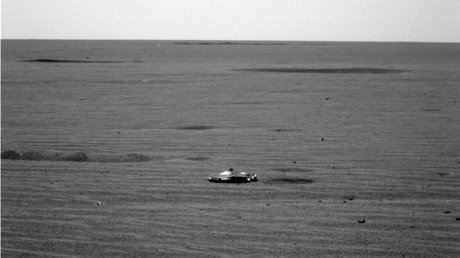King Tut revealed: Iconic tomb reopens after decade of restorations (PHOTOS)
Visitors have poured to the tomb of pharaoh Tutankhamun in Egypt after conservationists completed decade-long renovations, cleaning up the dust-covered walls of the burial and erecting a viewing platform.
The mummified body of the 18th Dynasty pharaoh, wrapped in fresh linen sheets, has been put on full display in the special oxygen-free glass case. Photos of the face and feet of the pharaoh, who ascended to the throne at the tender age of nine or ten and reigned for only nine years, have been released following a thorough clean-up and restoration works at what has become one the world’s most renowned tourist attraction sites.
Although the centuries that passed since the pharaoh’s death did their work on the mummy, his face has been almost fully preserved and none of the toes are missing.
The 3,000-year-old tomb, discovered by British archeologist Howard Carter almost a century ago in Egypt’s Valley of the Kings, has become the symbol of the ancient kingdom, luring crowds of tourists from all over the world.
The incessant flow of visitors took a heavy toll on the burial chamber, changing its inner atmosphere and endangering the artefacts. Apart from physical damage such as scratches from filming equipment and lost items, it has suffered from dust, humidity and carbon dioxide.
Conservationists have cleaned up the murals depicting the scenes from the pharaoh’s life and fitted an air filtration and ventilation system into the tomb. The work by Getty Conservation Institute and Egyptian Ministry of Antiquities started in 2009 and was underway for 10 years, save from a brief halt due to the political unrest in 2011.
During the restoration, the conservationists paid special attention to mysterious brown spots on the walls of tomb feared to be toxic mold potentially dangerous to humans. However, the scientists determined that while the spots were of microbiological origin, the bacteria – whatever it was – have long since died and present no danger.
Think your friends would be interested? Share this story!














